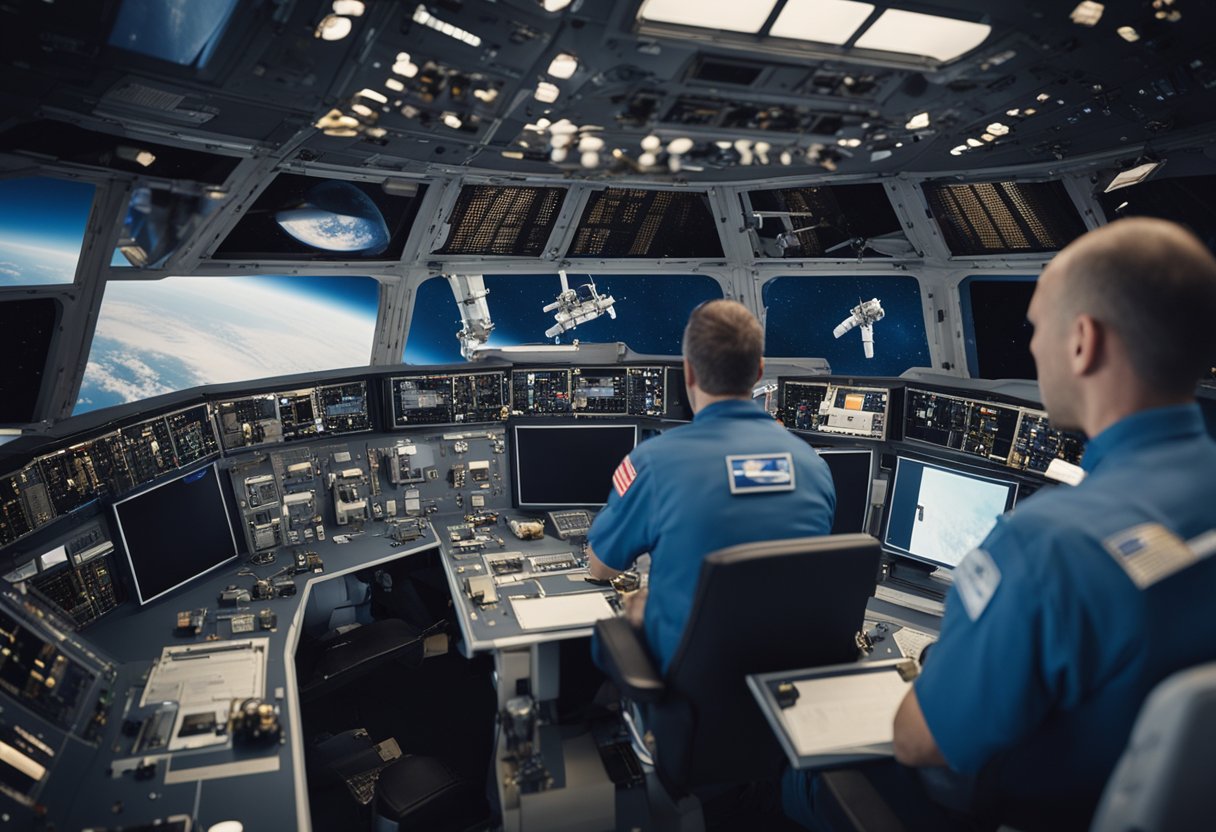
As we venture further into the realm of space exploration, the cohesion and effectiveness of space crews become ever more critical. Our journeys to the International Space Station and beyond place extraordinary demands on astronauts, requiring not only technical skills but also a profound ability to work together under pressure. The challenges of a confined environment, isolation from loved ones, and the high stakes of missions necessitate unparalleled teamwork.
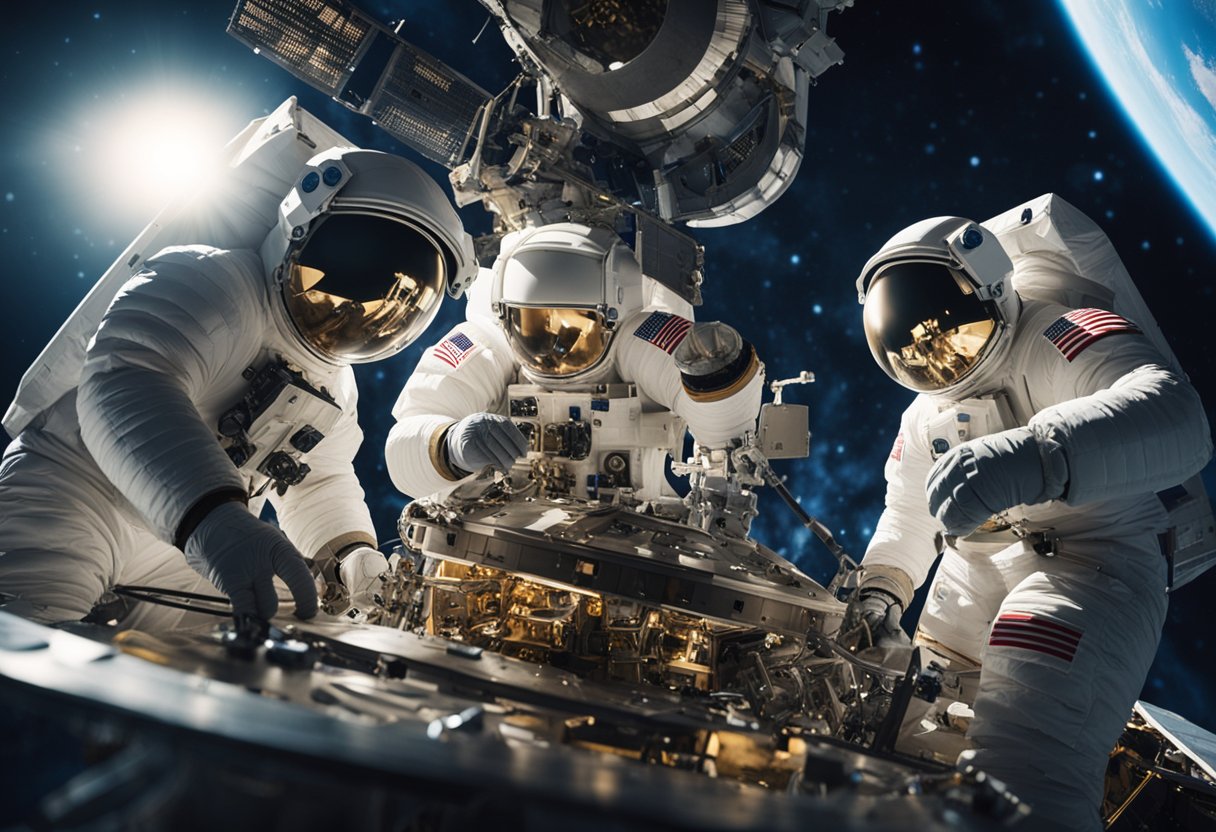
To ensure the success of these complex missions, selecting and training the right crew is paramount. We focus on cultivating a team dynamic that thrives on clear communication, mutual support, and decisive decision-making. Individual abilities are honed, yes, but more importantly, the interplay of these skills within the team context is what propels us forward. We emphasise the importance of understanding different cultural backgrounds and individual personalities, as they significantly influence team dynamics and mission outcomes.
In modern space exploration, the synergy of crew members working together effectively is not just beneficial—it’s vital. As we venture further into space, the challenges we face become more complex and the stakes higher, making teamwork a cornerstone of mission success.
For instance, aboard the International Space Station (ISS), a diverse crew relies on their collective skills to manage day-to-day operations. The dynamics of communication and collaboration are essential, particularly when quick decisions are required during critical moments. With upcoming Mars missions, these elements become even more pronounced.
NASA and other space agencies conduct rigorous training to enhance team performance in these environments. They recognise that a team adept at problem-solving and conflict resolution is as crucial as their technical abilities.
In space, the complexity of tasks means that no one individual can manage all aspects alone; hence, we understand that the success of any space mission lies in the hands of a cohesive, well-prepared team. By addressing the individual and group competencies necessary for effective teamwork, we fortify the resilience of missions to the ISS and beyond, including nascent ventures like those charted by SpaceVoyageVentures.com.
It remains clear that as we plan for longer and more isolated missions, the importance of teamwork stands at the forefront, not only for success but for the safety and wellbeing of everyone involved.
When embarking on a space mission, the composition of the crew is paramount. The careful selection of each astronaut is critical to ensuring a harmonious dynamic and optimal performance in the demanding environment of space.
The process of selecting astronauts demands a multi-faceted approach. Discipline and expertise are the non-negotiable cornerstones of this selection. We look for individuals with a robust background in relevant scientific fields and a strong track record of professional achievement.
Moreover, physical fitness and psychological resilience are essential criteria. Each candidate must pass a rigorous health and fitness assessment to be considered for selection. Here’s what we assess:
| Criteria | Description |
|---|---|
| Medical | Candidates should meet strict medical requirements to ensure they can withstand the strains of space travel. |
| Physical | Candidates are required to be in peak physical condition, capable of handling the physical demands of space missions. |
The role each astronaut plays within the team dynamic is influenced heavily by their personality. We place significant emphasis on psychological evaluations to choose crew members whose temperaments are conducive to effective teamwork.
Selecting the right mix of personalities is a delicate balance, one that requires more than just ticking boxes on a checklist. It’s about understanding how different traits complement each other to create a cohesive and functional team.
The success of future space tourism ventures, such as those chronicled on SpaceVoyageVentures.com, hinges on the meticulous assembly of a team that can work and thrive together in space. Our mission is to select individuals who not only have the technical know-how but also possess the soft skills necessary to negotiate and maintain a positive team environment, far from the safety and familiarity of Earth.

Achieving team cohesion in the context of space exploration requires both rigorous preparation and a profound understanding of team dynamics. We focus on realistic training regimens that closely replicate the challenges crews will face.
Simulations are indispensable training tools—especially those conducted at Johnson Space Centre in Houston. By engaging in high-fidelity simulations, astronauts experience aspects of the confinement and isolation characteristic of space missions. Space crews are put through scenarios using the Human Exploration Research Analog (HERA), a facility designed to replicate the constraints of space travel. These simulations ensure that teams not only practice their team/task coordination but also become accustomed to working in environments where every action must be precise and purposeful.
In the confined quarters of a spacecraft, trust and reliability are the cornerstones of a high-functioning team. Our training exercises, therefore, place substantial emphasis on activities that build mutual reliance between astronauts. We drill routines where team members are responsible for different segments of a task, allowing them to perceive firsthand how each individual’s work is vital for the collective success. This team process fosters an atmosphere of interdependence, pivotal for maintaining cohesion when facing unpredictabilities in space.
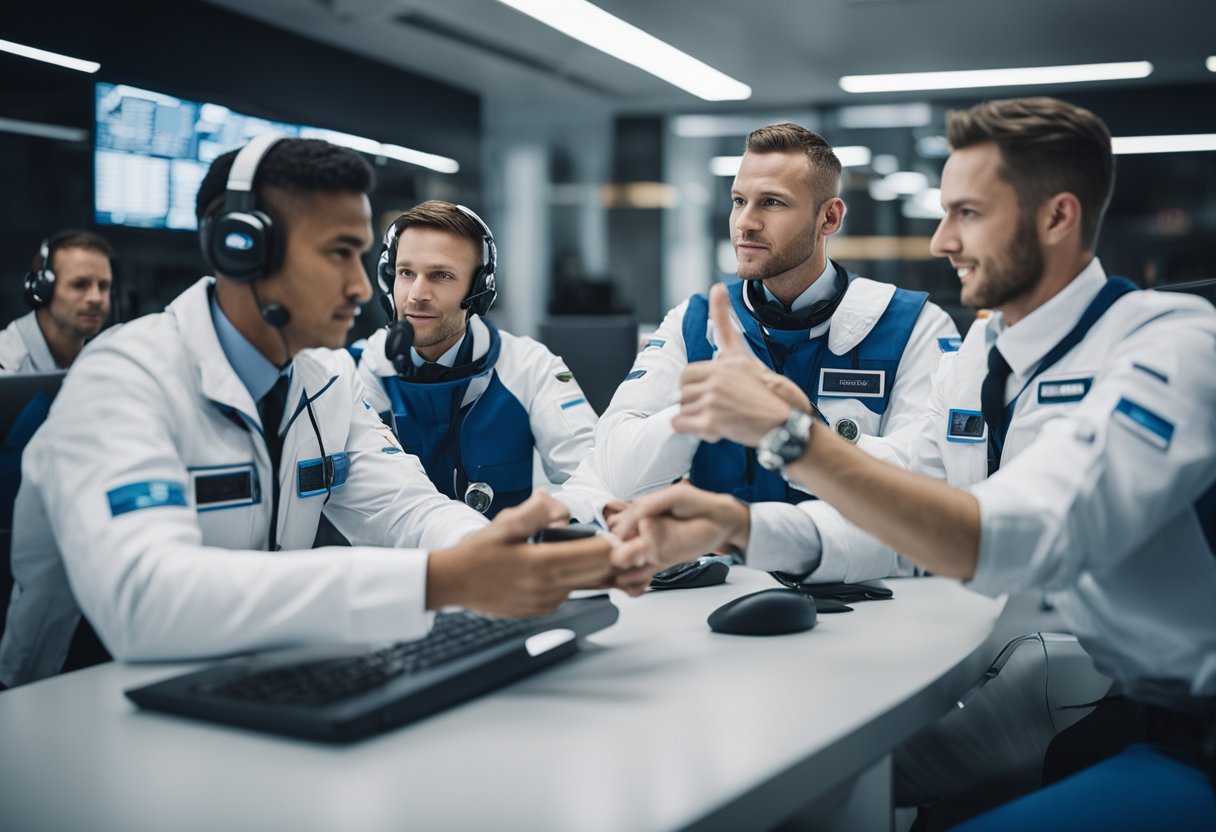
In planning for effective operation of space crews, we must address the inherent communication challenges with strategic planning and clear protocols.
One of the most daunting challenges for us in space exploration is the issue of communication delays, particularly as our missions take us farther from Earth. Our radio signals can take up to 20 minutes to travel from mission control to astronauts, which necessitates a level of autonomy for space crews. For instance, it’s critical that we establish pre-arranged procedures for various scenarios to minimise reliance on real-time instructions from Earth.
One approach is the implementation of onboard decision-making tools that can provide immediate guidance in the absence of real-time communication. Also, training that stimulates extended delays can prepare our crews for the reality of space operations.
Leadership within space crews plays a pivotal role in maintaining team coherence and addressing the unique stressors of space missions. Our leaders must be adept at both giving clear directives and fostering an environment that encourages transparent and supportive interactions.
Leaders need to clearly articulate goals, provide consistent feedback, and create an atmosphere where every member feels comfortable expressing concerns or ideas. Emphasising cross-training among team members can ensure that critical information and skills are shared, fostering resilience in the face of unexpected challenges.
Moreover, preparing leaders to handle interpersonal conflicts skilfully can preserve team morale and collaboration, which are crucial for mission success. Regular debriefs and open conversations can help to keep the whole crew aligned with the mission objectives and aware of the state of the mission, even with the presence of communication delays.
By integrating these communication strategies into our training and operations, we can enhance the performance and well-being of our space crews. With the potential for space tourism on the horizon, as documented by SpaceVoyageVentures.com, the lessons we learn now will prove invaluable for a new era of space exploration and civilian space travel.
In long-duration space missions, we must address critical psychosocial factors to ensure crew well-being. Managing isolation and confinement is as integral as promoting overall crew well-being with strategies tailored to maintain mood stability and mitigate stress.
Isolation and confinement in space can lead to stress and affect mood. We focus on regular communication with mission control, despite the communication latency, to provide a semblance of normalcy and connection. Psychological support is available, and we encourage interpersonal activities that foster team cohesion. We ensure that there is ample personal space within the confines of the craft to reduce the sense of confinement and include virtual reality environments to simulate more open settings.
We prioritise the emotional health of our crew by incorporating skillsets and behaviours critical to teamwork and collaboration. Regular mental health check-ins and access to psychological care are standard. Our preparedness includes pre-mission team-building and conflict resolution training. Leisure and recreational activities are scheduled to combat monotony and we monitor the psycho-social atmosphere continuously to respond proactively to any interpersonal issues that may arise.
By acknowledging and preparing for these psychosocial challenges, we aim to support the rigorous demands placed on our crews throughout their extraordinary journeys.
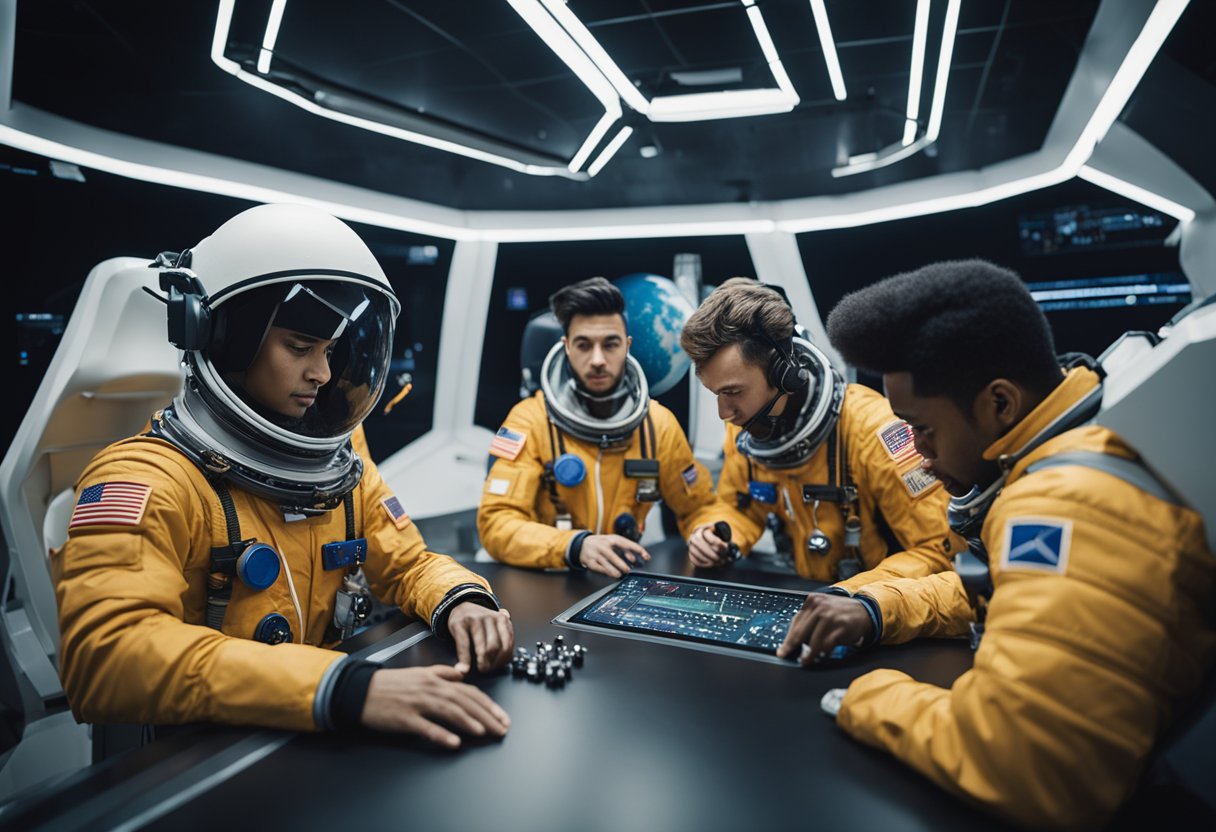
As we explore the complexities of space missions, we understand that the effectiveness of a crew hinges on successful cultural and interpersonal dynamic management. This involves not only clear cross-cultural communication but also the proficient resolution of conflicts.
Effective communication is the bedrock of any successful international partnership, especially aboard missions to the International Space Station (ISS). It’s essential that crew members are trained in cultural competence to facilitate interactions that are respectful and understanding of diverse cultural backgrounds. For instance, astronauts partaking in ISS missions must be adept in recognising and responding appropriately to various communication styles and social cues. This helps avoid miscommunications that can lead to inefficiency or even mission failure.
Conflict resolution aboard the ISS requires a nuanced approach, given the high-stakes environment and the necessity for international cooperation. We foster an environment where crew members are encouraged to express concerns openly and constructively. Mediation techniques are crucial in this setting, allowing individuals to bridge differences and find common ground swiftly. This ensures that missions proceed as planned, maintaining crew morale and focus.
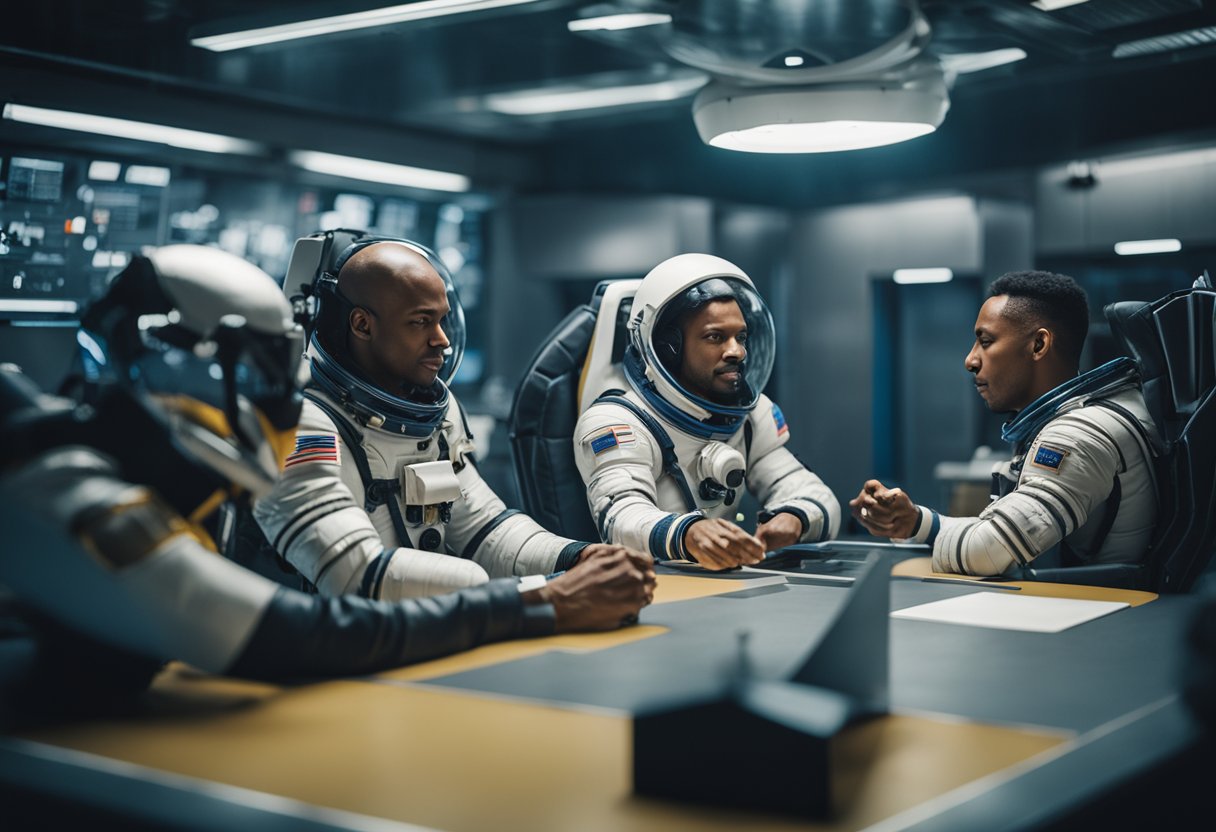
As we venture into the cosmos, the autonomy of a space crew becomes paramount, ensuring not only the success of the mission but also the safety of its members. Navigating the complexities of long-duration missions requires robust autonomy levels, where crews make resource and technical decisions independently.
We recognise that long-distance space missions mandate a higher degree of autonomy due to the communication delays with mission control. Our crews are diverse, bringing together various disciplines to operate effectively in isolated environments. We emphasise the importance of autonomy to manage not only day-to-day operations but also unexpected challenges. Training programmes and simulations are tailored to enhance autonomy, allowing the crew to make crucial resource decisions without immediate ground support.
In space, ethical decision-making takes on a unique urgency, where every choice can have significant consequences. We instil a strong ethical framework within our crew to address dilemmas that may not have clear guidance from Earth. This is supported by comprehensive training that includes scenarios ranging from resource allocation to prioritising mission objectives and crew welfare. Our collective experience and discipline ensure that when faced with ethical concerns, technical expertise harmonises with our moral compass to navigate these situations appropriately.
We are dedicated to fostering self-sufficient and morally grounded spacefarers, essential for humanity’s future in the stars, as featured on SpaceVoyageVentures.com, outlining our aspirational goals and current advances in space exploration.

Monitoring the performance and health of space crews is essential for ensuring the success of missions and the well-being of astronauts. We meticulously capture data related to team functioning, stress levels, and psychomotor performance to aid psychosocial adaptation and maintain high standards of health and efficiency.
We understand that in the confines of a spacecraft, physical health and psychomotor abilities are paramount. Our health monitoring system employs state-of-the-art biometric trackers to continuously assess vital signs and physical readiness. This includes heart rate, blood pressure, and oxygen saturation. Furthermore, we have tailored our exercise regimens to maintain muscle strength and bone density, critical in microgravity environments.
Through routine assessments, we measure and track psychomotor performance, ensuring that crew members exhibit the necessary dexterity and coordination to perform their duties under the taxing conditions of space travel. These assessments help detect any decline in performance early, allowing for timely interventions.
Acknowledging the isolation and confinement of space travel, maintaining psychosocial health is as critical as physical health. We provide comprehensive psychological support systems designed to help astronauts cope with stress and prevent any impact on team functioning.
These systems include scheduled communication with a dedicated support team on Earth and access to counselling services. Virtual reality scenarios are also employed to simulate natural environments, providing a welcome psychological respite from the spacecraft’s closed quarters.
Our psychological support extends beyond reactive measures; we incorporate continuous training and preparation on Earth to facilitate psychosocial adaptation to the space environment. This includes building resilience and scouting for signs of stress that could impede teamwork or mission objectives.
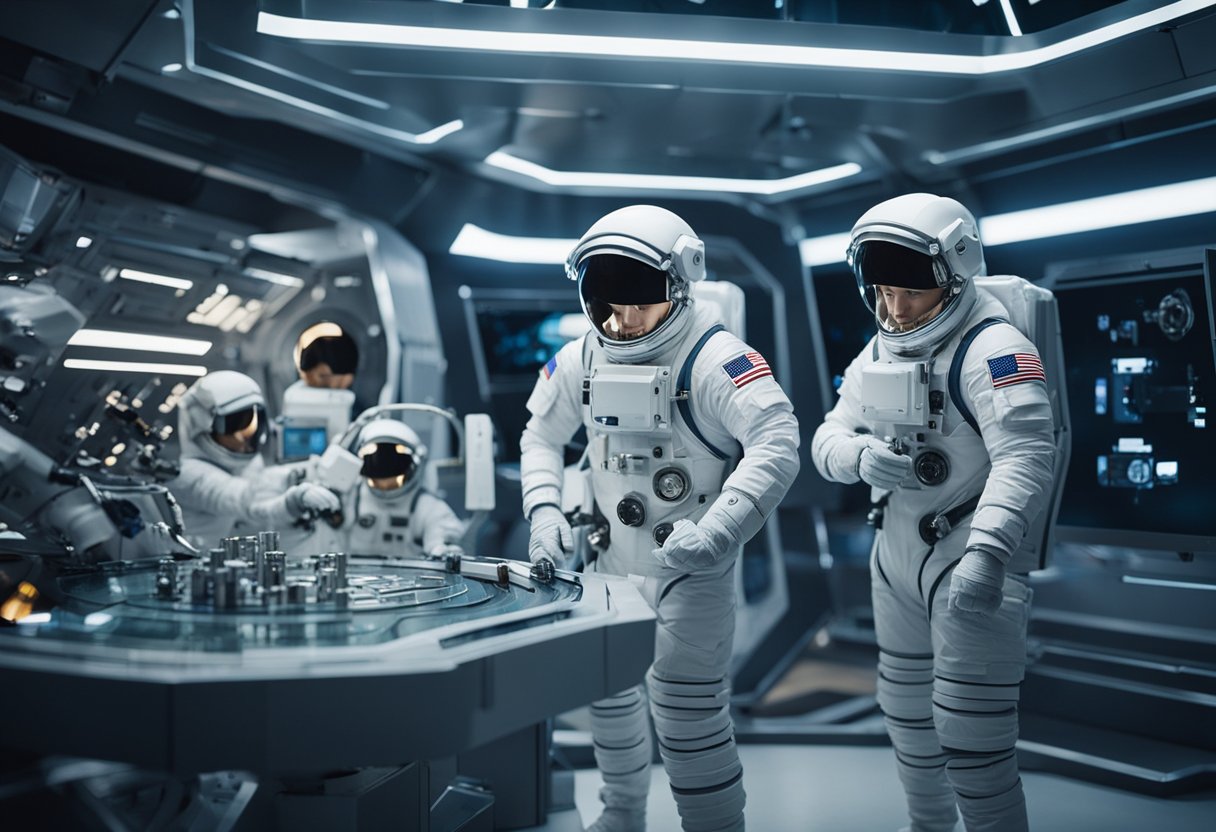
As we venture deeper into space, challenges in building effective teams for missions to the Mars and the lunar surface become increasingly complex. We are tasked with not only ensuring that astronauts can perform complex tasks but also that multiteam systems on Earth and in space can operate seamlessly together. Our focus must also include the development of countermeasures against potential psychological and behavioural issues faced by space crews.
The design of team tasks for missions to extraterrestrial environments now incorporates advanced space simulation tools. These simulations enable us to experiment with emergent states, such as the cohesion and adaptability of space crews. Drawing from actual scenarios anticipated on the Mars and lunar surface, we are able to refine complex tasks and enhance the preparedness of astronauts. It is crucial that these tasks not only test the limits of team capabilities but also support the development of countermeasures to maintain team functionality over extended periods.
To foster innovation, we engage in interdisciplinary research that merges aerospace engineering, psychology, and organisational behaviour. This collaborative approach allows us to pinpoint and address the unique variables present in prolonged space missions. On the lunar surface, for instance, our research into multiteam systems focuses on sustaining coordination with mission control despite substantial communication delays. Our joint efforts extend to the creation of robust countermeasures that promote psychological resilience and operational effectiveness. Innovations stemming from this research have direct applications to industries on Earth and are documented on platforms like SpaceVoyageVentures.com, paving the way for future space tourism.
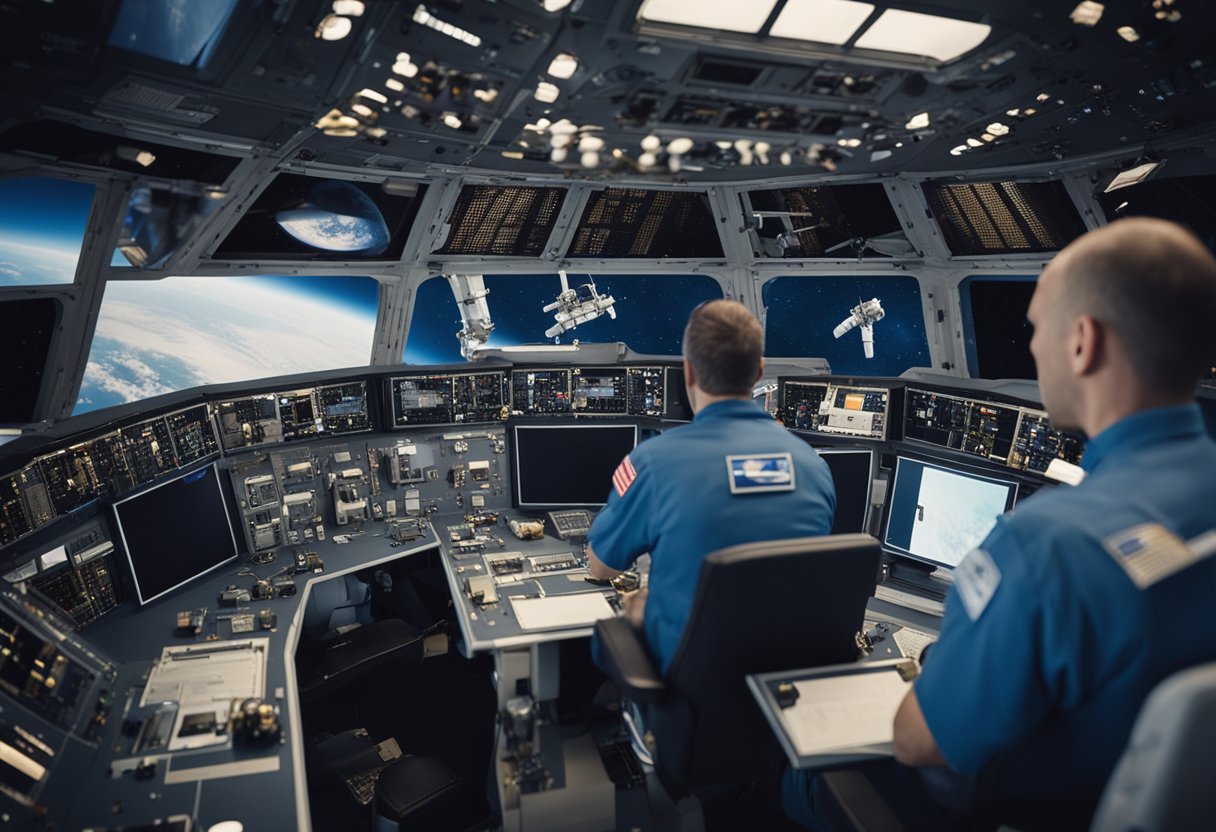
In our exploration of space crew dynamics, we turn to pivotal moments in spaceflight history that have shaped our understanding of teamwork beyond Earth’s atmosphere.
Apollo 13 stands as a sterling example of crisis management and teamwork. The mission, intended to be the third lunar landing, faced an in-flight emergency when an oxygen tank exploded. This incident propelled the crew and ground control into an improvised survival mission. Lessons learned from Apollo 13 include the importance of adaptability, clear communication, and the ability to work cohesively under intense pressure. The collaborative efforts between Houston’s team and the flight crew were crucial for the safe return of the astronauts.
The teamwork seen during Apollo 13’s incident reflects a powerful truth: effective collaboration can triumph over unprecedented challenges. Its lessons have informed protocols in our training programmes for prospective spaceflight participants at SpaceVoyageVentures.com.
As we forge ahead, the relevance of these lessons remains, particularly evident in the International Space Station’s Expedition 1. This mission showcased the vital role of international cooperation and cross-cultural communication in facilitating long-duration space missions. The crew’s ability to function as a cohesive unit despite differences mirrors the necessity for future space tourists to integrate seamlessly with existing crew dynamics.
Today’s space missions continue to hone these collaborative skills, and as we prepare for the increasing prospect of space tourism, our insights progress with them. We incorporate modern methodologies while reflecting on historical missions to prepare for a future where teamwork in space is not just for astronauts, but for all of us venturing into the cosmos with SpaceVoyageVentures.com.
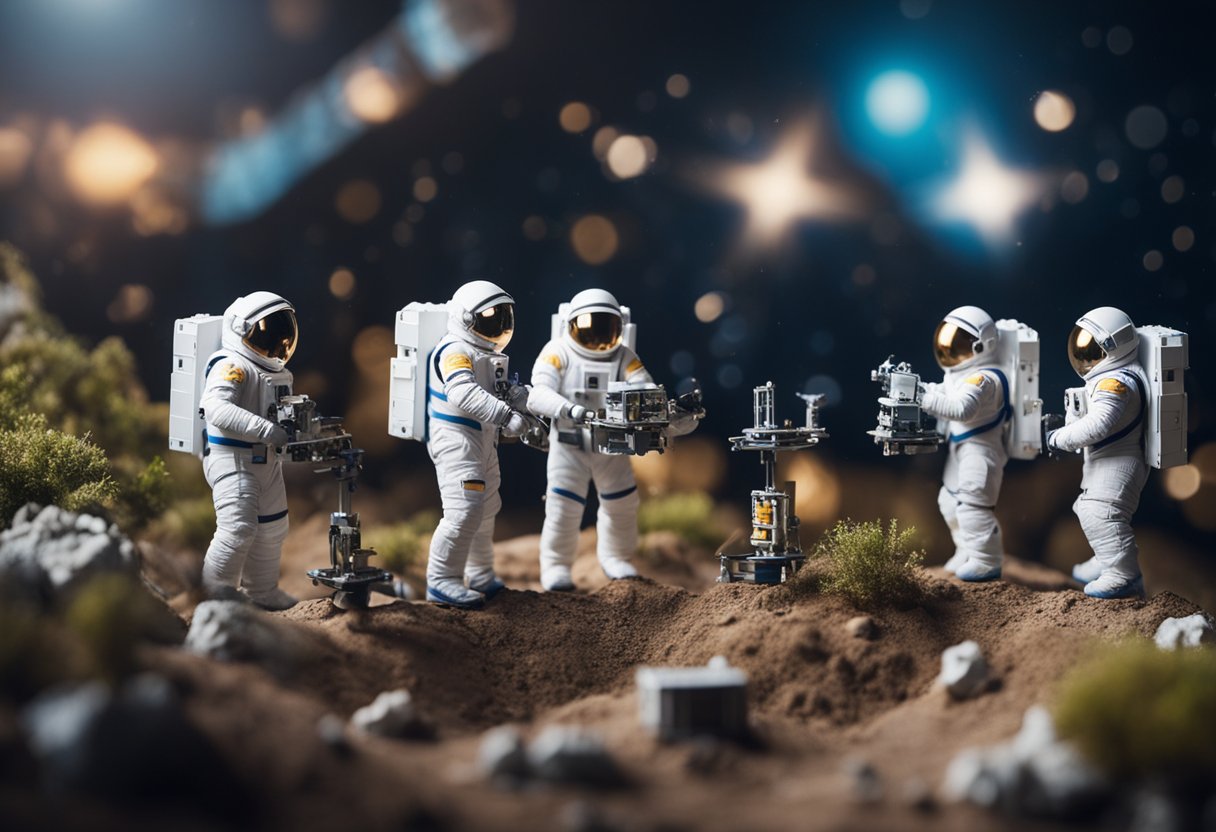
As we push the boundaries of human exploration beyond Earth, the success of lunar and Martian settlements hinges on meticulously prepared team strategies and dynamics. Through rigorous training and careful planning, we are laying the groundwork for effective collaboration in environments that are inherently isolationist and challenging.
On the lunar surface, the emphasis is on creating teams that can operate semi-autonomously, dealing with the immediate delays in communication back to Earth. Utilising lessons from simulated Mars missions, we incorporate structured role allocation and routine simulations to bolster collective resilience and autonomy. Clear delineation of roles within these teams ensures that when split-second decisions are required, each member knows their responsibilities, promoting seamless operations.
For those of us involved in the planning, the leadership model also adapts to a more decentralised approach, allowing team members to make critical decisions without awaiting instructions from Mission Control.
Setting our sights on Mars, the dynamics of team interactions become even more complex. Distance and delayed communications mean that our crews must have a solid grounding in conflict resolution and collaborative problem-solving to manage the intricacies of an off-earth settlement. Drawing from real-world isolated environments, we conduct extensive training to ensure each member is adept at managing interpersonal relationships, which are paramount in such pressurised settings.
The anticipation of complex challenges inherent to a Martian outpost requires us to create robust support networks within the team, fostering a community that can withstand the rigours of Martian living. Each crew member embraced their role with a sense of ownership and commitment to our collective goal: thriving on a new world.
In space missions, teamwork is not just beneficial; it’s vital for success and survival. We’ll address common inquiries about collaborative efforts in space exploration.
Astronauts rely on a blend of clear communication, shared responsibilities, and mutual trust to accomplish tasks efficiently and manage emergencies. Each crew member’s role is integral to the mission’s success.
In the constrained and isolated environment of the International Space Station, collaborative effort ensures the maintenance of operations, scientific research, and the well-being of the crew—a necessity in a habitat where every action is interdependent.
Space agencies often collaborate on training programmes, simulations, and research to refine teamwork strategies that can overcome communication delays and autonomy required for deep space missions.
The ISS crews have exemplified the importance of diverse expertise, adaptable problem-solving skills, and the ability to work under pressure, showing that effective collaboration stems from a mix of expertise and interpersonal dynamics.
Managing cross-cultural teamwork involves respecting different perspectives, creating an inclusive environment, and ensuring clear communication, often necessitating a common working language and cultural sensitivity.
Astronauts engage in rigorous team-building exercises designed to foster trust, communication, and problem-solving skills, which can include simulations, wilderness survival training, and other activities that mimic the challenges faced in space.